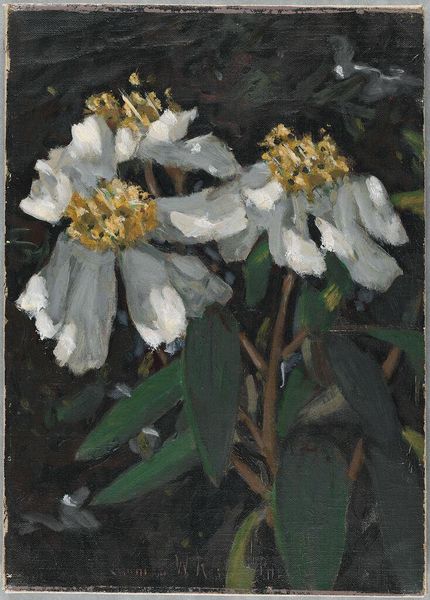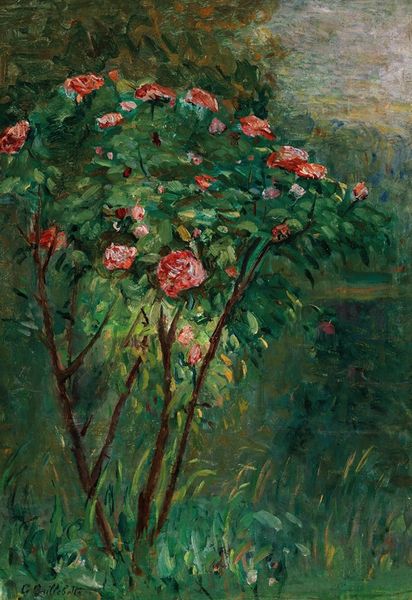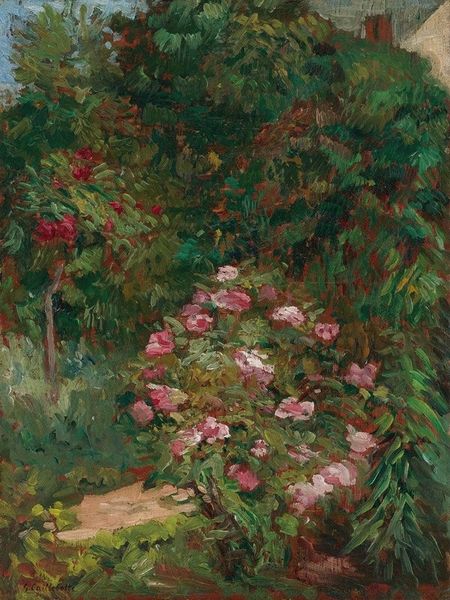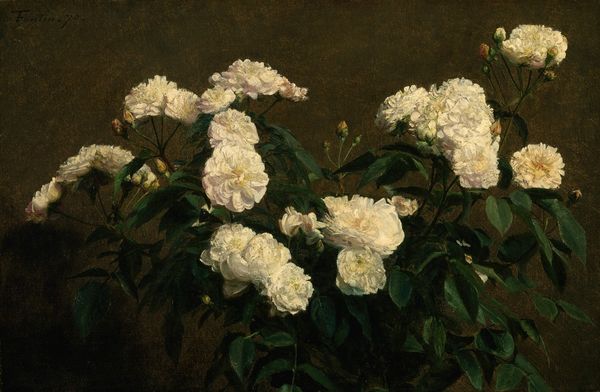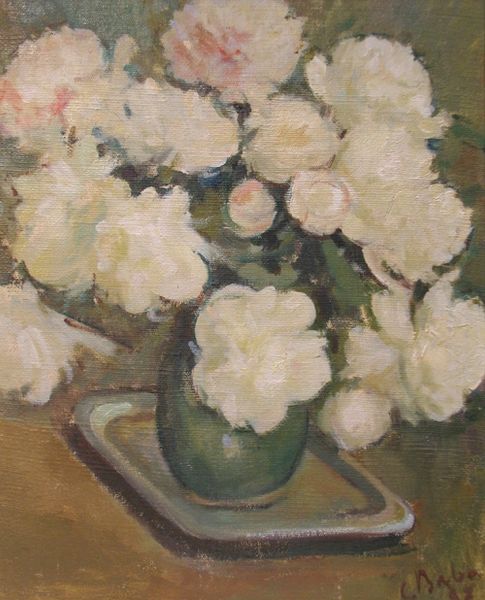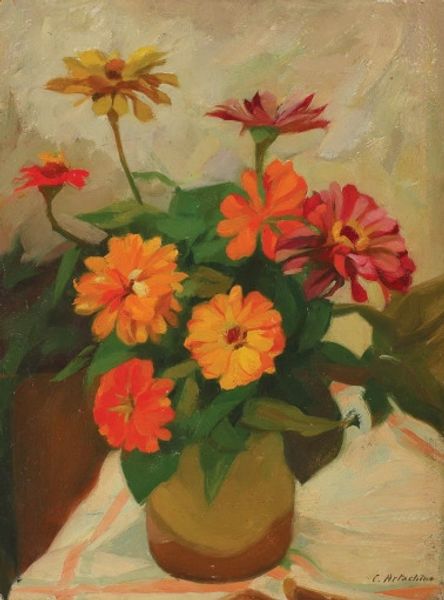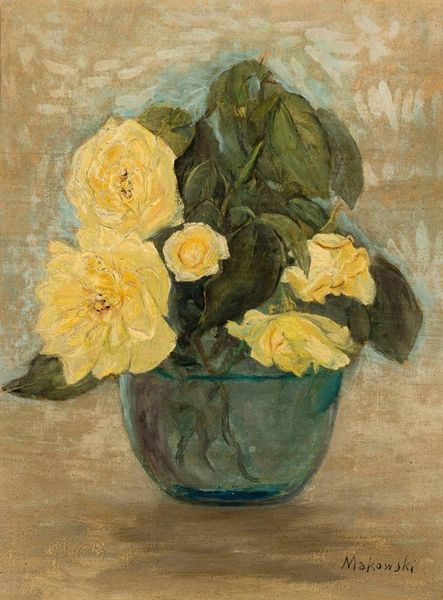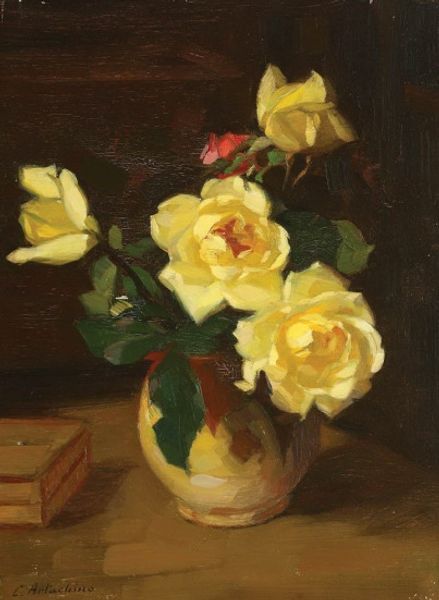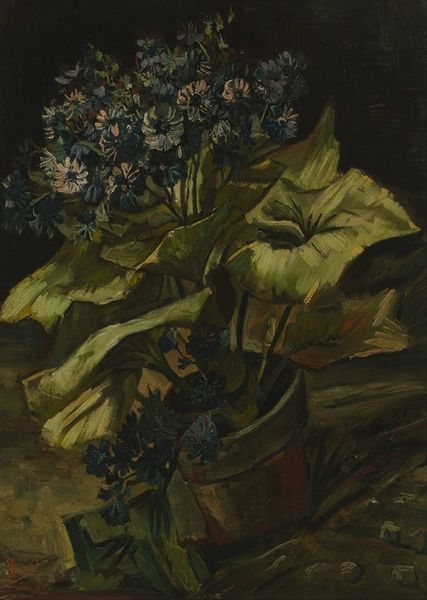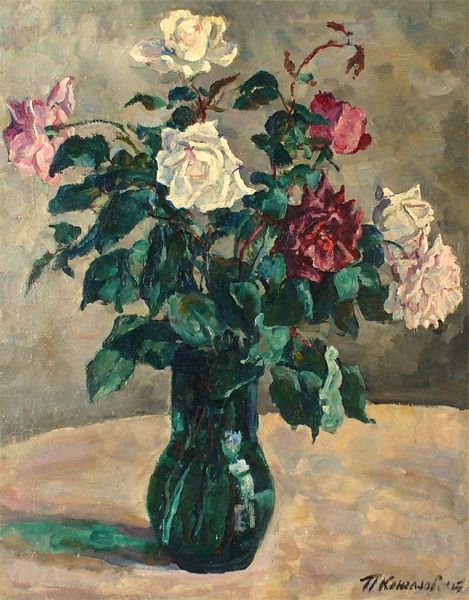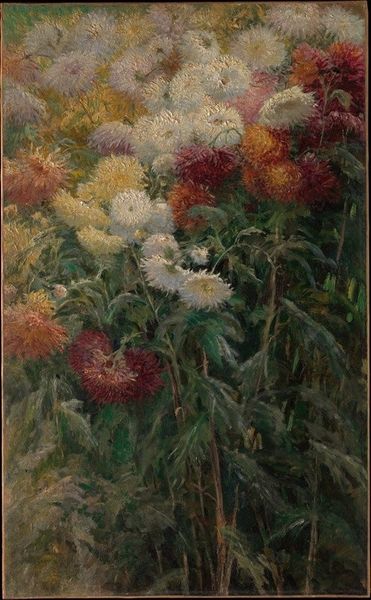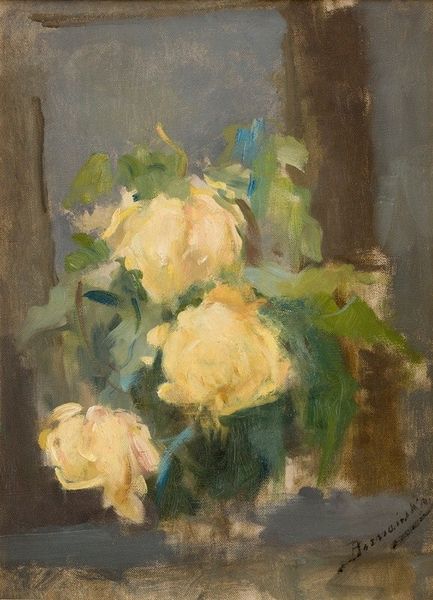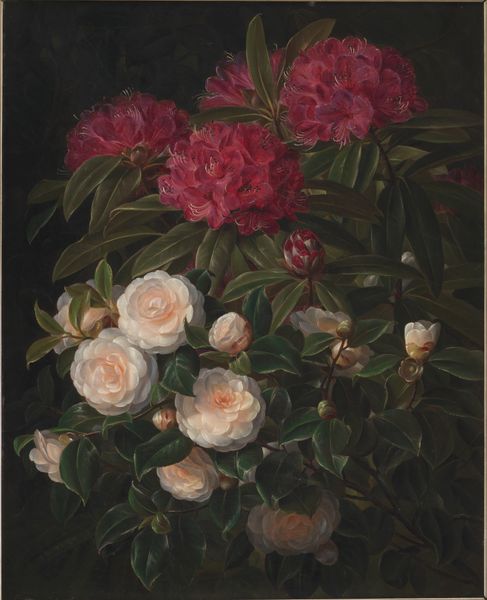
Copyright: Constantin Artachino,Fair Use
Curator: We’re standing before Constantin Artachino's "Wild Roses," painted in 1944. Editor: It strikes me immediately as a quiet, almost hushed space, dominated by muted greens and the soft yellow of the roses. There’s a remarkable stillness in the composition. Curator: Note how Artachino employs impasto—thick layers of oil paint—to capture light and shadow. Look at the individual brushstrokes creating a sense of texture, especially in the petals. It’s less about photorealistic depiction and more about the essence of the forms. Editor: The roses themselves are incredibly evocative. Yellow roses, particularly in the context of 1944, might represent friendship or even remembrance. Is there a sense of melancholy at play here, or perhaps quiet resilience amidst turbulent times? Curator: The painting avoids a central focal point; instead, the roses seem to emerge from the backdrop of foliage, creating a shallow depth of field. The composition emphasizes a dynamic relationship between foreground and background, defying traditional perspective. It is as though, using a term of Deleuze, the painter captured a moment of becoming within the rhizomatic growth of the plants. Editor: That interplay feels vital. Roses are deeply symbolic, associated with love, beauty, and transience across cultures. Perhaps Artachino is making a statement about the ephemeral nature of beauty itself, existing within a defined space. The muted tones contribute to this pensive interpretation. Curator: From a purely formal perspective, observe the tonal variations, especially in the greens. They shift from cool, shadowy hues to warmer, lighter shades. That variation prevents the foliage from becoming monotonous and draws our eye to the delicate curvature of each leaf. Editor: Indeed. This has been such an insightful view into both the surface and symbolic depth, the emotional tone, of these roses, during their very particular historical period. Curator: I concur. It's wonderful how an understanding of formal elements can unveil symbolic complexities and historical context.
Comments
No comments
Be the first to comment and join the conversation on the ultimate creative platform.

